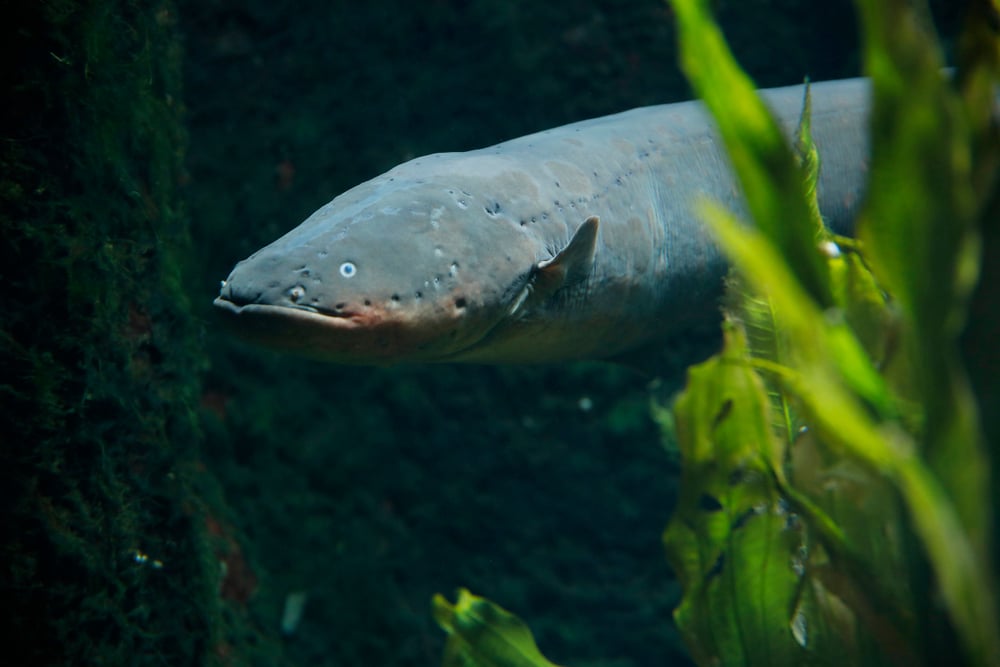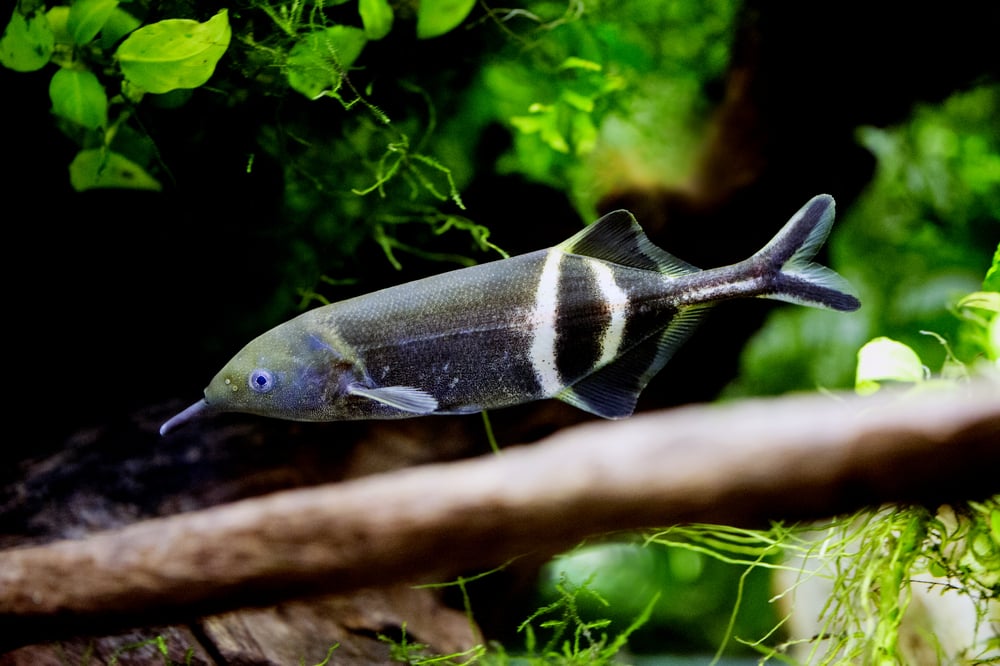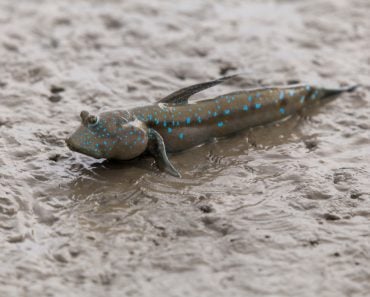Electric fish produce electricity with the help of their electric organs. These electric organs have modified muscle cells called electrocytes that produce electricity.
The 18th and 19th centuries were electrified times! Luigi Galvani discovered animal electricity by electrocuting a frog to see if its muscles would twitch (they did). Alessandro Volta was busy making what would eventually become the modern battery. Alexander Von Humboldt, in all his polymath glory, was doubting electricity altogether, both animal and metallic, while Michael Faraday was revealing how electricity and magnetism were connected.
The common thread running through the work of these gentlemen is the electric eel.
Over the years, the electric eel has frightened countless horses, inspired scientists, and been the subject of art and music.
Scientists recently discovered that this Amazon-dwelling fish (its name is a misnomer, as it’s actually a kind of fish—a knifefish, to be specific) is actually three different species of fish—the original Electrophorus electricus and two new additions, E. voltai, and E. varii. So, how do these fish produce voltage up to 860V?

Types Of Eels
Electric eels aren’t the only fish that can produce electricity. There are a host of fish that produce electricity at different capacities. Broadly, there are two types of electric fish, weakly electric fish and strongly electric fish. Weakly electric fish like the Peter’s elephantnose fish and the black ghost knifefish don’t produce enough electricity to shock anything, but it serves as a sense organ, helping them communicate and interact with their surroundings.
Strongly electric fish are those that produce shockwaves that can harm. The electric eel, a knifefish belonging to the Gymnotidae family, is the most popular of these variety. The electric catfish, the electric ray and the electric stargazer are some other potent zingers. These fish use their electric powers for a range of purposes, from communication and electrolocation to hunting or defense.
Recommended Video for you:
Electric Eel Anatomy – The Electric Organ
Electric fish produce their electricity through a specialized electric organ. The electric eel’s electric organ, for example, occupies about 2/3 of the fish’s body, which is divided into three different parts, each producing a different nature of electric current.
The Main organ and Hunter’s organ produce the high dosage electric currents, while the Sach’s organ is responsible for the low voltages. The electric ray has two large electric organs on either side of their head (some might have it in their tails), while the Peter’s elephantnose fish has its electric organ near its tail.

Electrocytes
Within the organ are cells called electrocytes arranged in stacked columns, with multiple columns parallel to each other with fluid-filled spaces between them. Electrocytes are modified cells either of muscle (in most cases) or neural origin. These cells generate the eel’s electric punch. The number of electrocytes in a column and the number of columns dictate how much electricity the fish can produce.
How Do Electric Eels Generate Electricity?
How the electrocytes produce electricity is fascinating and highly specific. Electrocytes have two sides, a posterior side that is innervated with a motor neuron and an anterior side that is undulating and slightly rumpled. Its membrane has many tiny protein channels that selectively allow sodium (Na+) and potassium ions (K+) (different channels for each) to flow into and out of the cell.
The electrocytes maintain a positive outside and negative inside (relatively) environment by pumping out Na+ and K+ ions. Upon instruction by the nervous system (carried to the electrocyte by the motor neuron), the electrocytes create a dipole.

The signal from the motor neuron causes the ion channels on the posterior side to pump Na+ and K+ into the cell, while the anterior side continues to pump the positive ions out of the cell. This gives the posterior side of the cell a relatively positive charge (on the inside of the cell) and the anterior side a negative charge (on the inside of the cell). Voila, a dipole has been created and the fish has electricity.
One electrocyte cannot do much on its own, but collectively, they can pack a punch. How the electrocytes are stacked also makes a difference to the electricity it produces (whether the fish prioritizes higher current over higher voltage or vice versa). The electric eel, for example, can have as many as 6,000 electrocytes in one column. The electric ray (Torpedo species) has many shorter columns with 1,000 electrocytes per column, since the ray prioritizes increasing the current over voltage.
How Do Electric Eels Release Their Shock?
Electric fish can either emit an electric organ discharge (EOD), in pulses, or in a wave-like (sinusoidal) manner. Furthermore, they can either produce DC, direct current (monophasic) or AC, alternating current (biphasic).
Brachyhypopomus walteri, a weakly electric fish with a long slithery tail and spotty orange scales, produces AC pulses that sound like ‘pops’ when converted into sound. Its relative B. bennetti produces DC pulses instead.
Wave-producing electric fish are weakly electric fish, as constantly producing EODs is energetically draining. The amplitude of their EODs isn’t as high as some pulse-emitting electric fish, but their wave pattern does allow their electric signals to hide from detection, as most predatory fish can sense DC impulses (like the predatory electric eel and electric catfish), as opposed to AC current.
What Do The Fish Use Their Electric Powers For?
Most electric fish use electricity as a sensory tool, much like sight, small and touch. For freshwater fish like the electric catfish and the electric eel who live in the murky, dark waters of the Amazon, electricity replaces a sense like sight. The fish send out an electric field (through their EODs) and receptors on their membranes collect information on their surroundings. These electroreceptors (noticeable in electric eels and electric catfish as pits in their skin) act like voltmeters, sensing the changes in the electric field caused by their surroundings and determining whether something can be dinner. This video shows a knifefish using its electroporation.

Sometimes two electric fish with similar discharge frequencies bump into each other, causing their electric fields to overlap. To prevent interference caused by the two signals, electric fish have come up with a clever mechanism called the jamming avoidance mechanism.
The jamming avoidance mechanism is when the two fish will change their discharge frequencies away from their neighbors. They collect information based on the other fish’s EOD, and then change its own accordingly. Neuroscientists have been fascinated by how electric fish are quickly able to respond to their surroundings to change their electric field.
Strongly electric fish, on the other hand, hunt with their shock value.
The newly discovered E. volta can produce up to 860 V worth of electricity, enough to frazzle small-sized prey and give a larger mammal a slight, but startling shock.
The electric eel’s hunting strategy is particularly interesting.
It sends out pulses of strong EOD to discombobulate its prey’s nervous system. After the initial volley of pulses, it comes back with a stronger EOD to ‘KO’ its prey. Kenneth Catania, researcher at Vanderbilt University, found that electric eels curl around their prey to fully paralyze it. This strategy allows the eel to maximize the impact of its shock.
The electric eel’s head is positive compared to its tail, which is more negative. The fish has this dipole nature due to the direction of the flow of positive charge through its electric organ. It places its positively charged head at one end of its prey and its negatively charged tail at the other end, and then sends out its shockwaves. Once the job is done, the eel swallows its prey whole!
Why Don’t The Fish End Up Shocking Themselves?
The electric organ of strongly electric fish is padded with adipose and connective tissues. When the fish release their shock, these tissues insulate the fish from their own offensive tactic. Electric fish have also been found to express similar genes that might offer the fish some insulation.
Size also plays a role. Most predatory strongly electric fish are much larger in size than their prey. Some electric eels can reach sizes of up to 8 feet. Their current will fry their smaller prey, but wouldn’t do much to their larger bodies, much like how it wouldn’t seriously affect an adult human.

That being said, electric fish aren’t completely shock-proof. Many have noticed that electric fish twitch, especially when removed from water. This might be the case because air doesn’t allow the charge to dissipate out of the fish as fast as water (especially salty sea water).
Scientists of the past aren’t the only ones inspired by how nature has managed to harness electricity. A team of researchers from the University of Fribourg and the University of Michigan have created a soft battery made of a gel-like substance using electrocytes as inspiration. The team hopes that their work can be put to use in certain medical procedures.
Electric fish still have a lot to teach scientists about how electrolocation works and how these sparky fish evolved in the first place. There could be even more shocking research revelations to come – just make sure you don’t get zapped in the process!
References (click to expand)
- Nelson, M. E. (2011, July). Electric fish. Current Biology. Elsevier BV.
- (2008) Electric Organ Electric Organ Discharge. The University of Regensburg
- AC or DC? Two newly described electric fish from the Amazon .... Phys.org
- Catania, K. C. (2015, November). Electric Eels Concentrate Their Electric Field to Induce Involuntary Fatigue in Struggling Prey. Current Biology. Elsevier BV.
- Schroeder, T. B. H., Guha, A., Lamoureux, A., VanRenterghem, G., Sept, D., Shtein, M., … Mayer, M. (2017, December). An electric-eel-inspired soft power source from stacked hydrogels. Nature. Springer Science and Business Media LLC.













